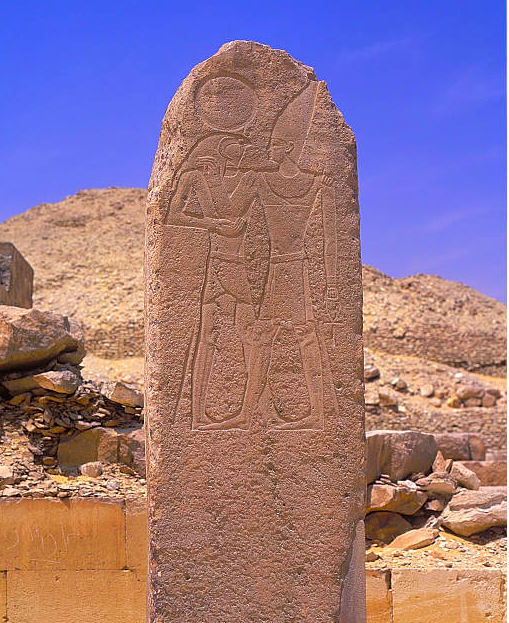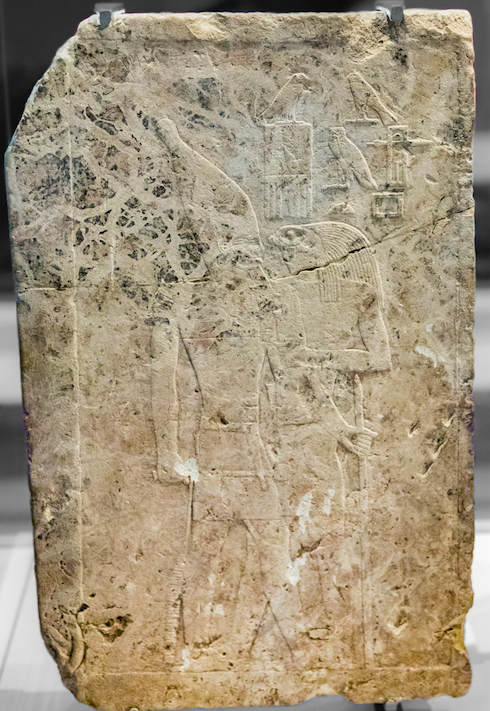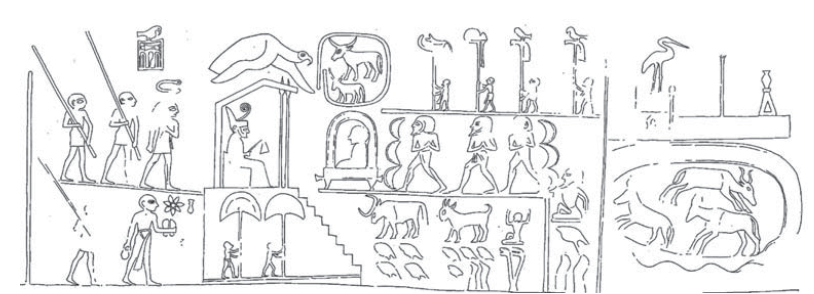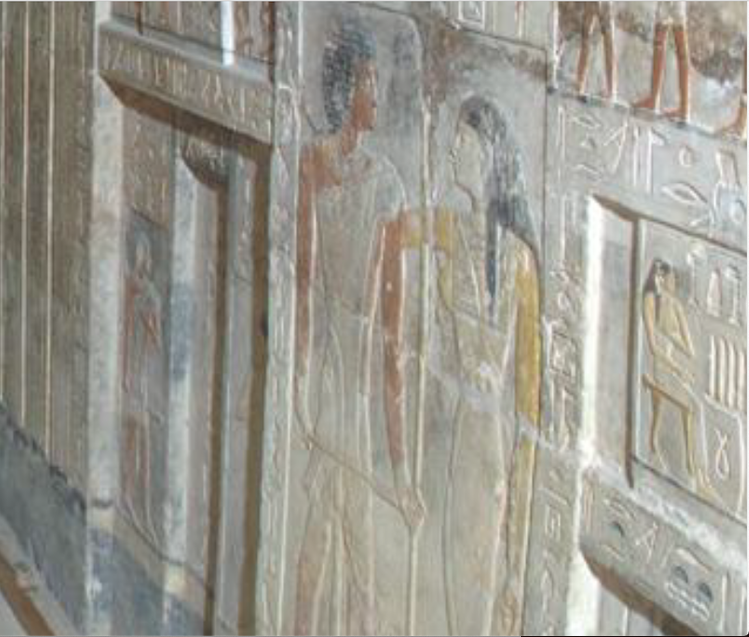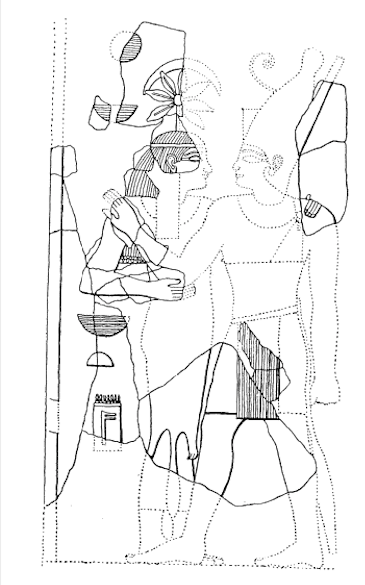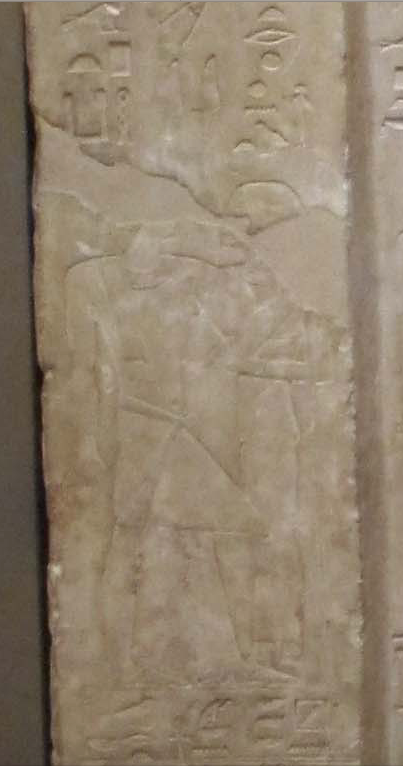The Sun and the moon
Kahai and his spouse Meretites, Vth dynastie, West wall.
The «husband» (hy, official term to designate the husband), whose skin is red, represent the creator god Râ, and the spouse (?m.t, official term), has the yellow skin on her body, but her face is white as the moon, also called Horus' or Râ's Eye (jr.t, fem.).
The souses compared to the sun and the moon, it follows that marriage was unique union, without distribution, stable, perpetual, without resumption, of a man and a woman in view of founding a family.
So the family had to devolop in the frame of a unique conjugal love whose degree of intimacy, of intensity, and of stability, served to educate not only children but also the society, as evidenced by the false-door's symbolism :

Stela false-door of Sameri, Vth Dynastie, Saqqara, kept in Bologna.
Embace of the spouses on the left pillar. The spouse is said « pensionate near her husband »
The spouse's embrace, symbol of Râ's union with humanity, had the same signification as the man with his stick called « known of the king », and as the breathing og the lotus (=Râ) (right jamb).
The doors' jamb symbolize the humnity united stably and durably with Râ/Horus, as we learn from Pyramids' Texts:
TP 272 (W/A/S ; T/P/S) :
« O Height wich is not united, (q?jt n dmm?=s), Nw's door (?rrwt nt Nw) (= door's jambs without the lintel)
N has comme to you, (jy~n N ?r=?), give that this be opened for him (dj jwnt n=f nw)
because N est this small one there (N pj šrr jm) (=the lintel)
N is the head of the folowing of Râ, he is not the head of gods of disturbance (jw N tp n šmsw R?, n N pn tp n?rw t?t?) » ( =the jambs).
Marriage was then a pillar of society, a vital factor for social and cosmic stability.
Marriage was «the height », the « door » to acceed to Beyond, that is to say, définitive union of Osiris N with Rê/Horus.
Laure de Lamotte ©
Last edited: 10/09/2021
Comments
-

- 1. Elser On 22/07/2025
Bonjour Monsieur, Madame, vous avez besoin d’un prêt sérieux et fiable sans passer par une banque ? Je suis un prêteur particulier et je propose des financements adaptés à vos besoins.
Détails sur la raison de votre demande
Indiquez le montant de votre besoin
Indiquez la durée également
Indiquez votre numéro
Taux d’intérêt avantageux 2 %
Que ce soit pour un projet personnel, professionnel, un achat immobilier ou un besoin urgent, je vous accompagne avec des conditions claires et transparentes.
Soumission de la demande : Envoyer un courriel, une description de votre projet et laissez vos cordonnées pour vous recontacter au plus vite ou via WhatsApp.
Adresse de contact : elserericerwin@gmail.com
Add a comment


